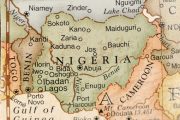
As many as 700 migrants are feared dead in the Mediterranean after a boatful of people trying to escape the violence and chaos in Libya capsized early Sunday morning. Twenty-eight survivors and 24 bodies were recovered as the search continued, with rescuers manning 17 vessels from Italy’s coast guard, its financial police, and the Italian and Maltese navies, along with vessels belonging to the European-led rescue program “Triton” and several merchant boats.
“It is really too early to know,” Flavio Di Giacomo, a spokesman for the International Organization for Migration in Italy, said of the number of dead. If the estimates are confirmed, he told the New York Times, “this would be the deadliest shipwreck in the Mediterranean.” The hundreds of migrants were crowded onto a boat just 65 feet long.
“The migrant boats are increasingly overloaded, and the journeys become even more dangerous, if at all possible,” DiGiacomo said.
An estimated 90 migrants died while trying to cross the sea to Italy in the first four months of last year, the migration organization reported, and about 900 people are believed to have died so far this year, the Times reported. “If there really were 700 dead this time,” Di Giacomo said, “we would hit a horrendous record.”
The Israeli newspaper Haaretz reported the estimated 700 dead would put the death toll at 1,500 since the beginning of the year, as migrants fleeing insecurity and poverty in sub-Saharan Africa and the Middle East have attempted the dangerous trip by boat to the relative safety of Europe. Italian Prime Minister Matteo Renzi called the rising number of dead refugees a “systematic slaughter in the Mediterranean.” Renzi called for an emergency meeting of European leaders this week to address the refugee crisis. The previous search and rescue operation, called “Mare Nostrum,” was cancelled last year because of its cost. Some also believed it encouraged migrants to make the dangerous journey by giving them the hope of being rescued.
“We cannot remain insensitive when every day there is a massacre in the Mediterranean,” Renzi said.
“It was an illusion to think that cutting off Mare Nostrum would prevent people from attempting this dangerous voyage across the Mediterranean,” said Aydan Ozoguz, Germany’s representative for migration, refugees, and integration. More of those voyages are likely to be attempted as the weather turns warmer, Ozoguz said.
The crisis also highlights the results of the “humanitarian” bombing campaign the United States and European allies carried on in Libya in 2011 in support of rebels fighting to overthrow Libyan dictator Moammar Gadhafi. The air war achieved the objective of “regime change” in Tripoli, toppling Gadhafi and eventually leading to his capture and execution by the rebels. But as was the case in Iraq, the overthrow created a power vacuum in the country, which then became a haven for al Qaeda-affiliated jihadists. One tragic result was the attack by heavily armed militants on the U.S. outpost in Benghazi on September 11, 2012 that killed four Americans, including the U.S. ambassador to Libya. Jihadists from Libya also supplied men and arms to militants fighting for control of the Damascus government in Syria’s civil war.
Now many of those jihadists have joined the ranks of the Islamic State of Iraq and Syria. The United States and its allies have shown that with enough military power, it’s not too hard to overthrow a government. Restoring peace and security is another matter. Bombing might not be the best way to promote stability in an already turbulent region.
Photo of a monitor showing ships navigating the area where the boat believed to be crowded with as many as 700 migrants from Libya capsized, April 19, 2015: AP Images



